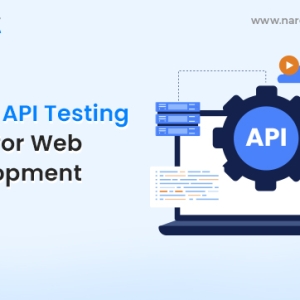Cross-browser compatibility is king in software development, and user experience is paramount. Java is still the preferred tool for developers because of this. It is perfect for creating applications of any complexity, from straightforward scripts to complex corporate systems, thanks to its platform neutrality and adaptable features.
However, creating these works of art is only half the tale. Extensive testing is necessary to guarantee their flawless operation in a variety of settings. Java testing frameworks come into play here, giving developers the ability to fully utilize automation.
As a result, this article will cover Java testing frameworks that will boost your testing capacity and streamline your workflow.
What are Java Testing Frameworks?
Automated test generation, execution, and management are facilitated by a set of well-designed tools, libraries, and protocols known as Java Testing Frameworks. These frameworks serve as guides, offering an organized method that expedites the testing process and produces excellent outcomes.
This is how they function:
- Defining Test Structure: Test cases can be written and organized uniformly with the help of frameworks, which facilitates test reuse, maintenance, and reading.
- Testing: They offer automated test case execution techniques, frequently merging with build tools for continuous integration.
- Asserting Results: Assertion methods are provided by frameworks to confirm expected test results and pinpoint inconsistencies.
- Reporting findings: They produce summaries of test findings that highlight accomplishments, shortcomings, and mistakes.
- Managing Test Data: A few frameworks help with test data management, making sure that test environments are put up and cleaned up quickly.
Top 11 Java Testing Frameworks to Make Your Software Bug-Free
JUnit
JUnit is a well-regarded open-source framework created especially to make Java application unit testing easier and more efficient. It focuses on testing distinct code segments (classes, methods) separately to make sure they perform as intended. Java development services frequently use JUnit to rigorously check that discrete components are proper, improving the quality and dependability of their code.
TestNG
TestNG provides a more complete and adaptable framework for Java testing by expanding on the fundamental ideas of JUnit. It includes functional testing, end-to-end testing, integration testing, and more in addition to unit testing.
Mockito
A customized mocking framework called Mockito was created to make the development and administration of mock objects in Java testing easier. Developers can segregate code units and concentrate testing on particular behaviors by using mock objects as stand-ins for real objects.
Spock
Spock is a framework for testing and specification that combines the expressiveness of Groovy with the ideas of Behavior-Driven Development (BDD) to produce tests that are clear, understandable, and easy to maintain.
Cucumber
A testing framework called Cucumber is compatible with Behavior-Driven Development (BDD), a methodology that prioritizes communication and mutual understanding between stakeholders that are both technical and non-technical. It makes it easier to write test cases in simple language so that all project participants can understand them.
JBehave
Another Java testing framework based on the ideas of behavior-driven development, or BDD is called JBehave. It encourages testing through a narrative-driven methodology, which uses stories to define expected system behavior and direct the development of tests.
Selenium WebDriver
The industry-standard framework for automating web application testing on a variety of platforms and browsers is Selenium WebDriver. It gives developers the ability to create tests that replicate how users would interact with websites to verify functionality and user experience.
Serenity
Based on Selenium WebDriver, Serenity (formerly called "Serenity BDD") is a Java-based framework that streamlines BDD-style testing and generates detailed, insightful results by integrating with well-known testing tools like JUnit and Cucumber.
Selenide
Concise and expressive, Selenide is a framework developed on top of Selenium WebDriver to make writing and running web UI tests in Java easier and more efficient.
Katalon Studio
Building on Selenium and Appium, Katalon Studio markets itself as a complete automation solution that makes online, API, and mobile application testing easier to create, run, and maintain.
Gauge
As a "specification-by-example" tool, Gauge is a test automation framework that encourages cooperation and produces live documentation to close the communication gap between technical and non-technical stakeholders.
Benefits of Using Java Testing Frameworks for Flawless Software Quality
Automation
Automation powers Java testing frameworks. These frameworks gracefully free developers from repeated manual testing, saving time and improving productivity. This freedom encourages regular testing throughout the development process, enabling speedy feedback and defect detection.
Automated tests provide unmatched consistency, ensuring identical execution each time, and encouraging test result reliability and software quality confidence. Structured development and best practices in Java techniques readily integrate with automated testing principles, giving a solid framework for designing and maintaining reliable test suites in Java applications.
Organization and Structure
Test code chaos can be organized with Java testing frameworks. Structure and defined conventions ensure consistency and ease of maintenance. These frameworks turn large test suites into structured gardens that anybody can grow by supporting isolated, reusable, and modular tests.
Collaboration and Communication
Java testing frameworks like Cucumber and Gauge help developers and business executives communicate. Their human-readable language bridges code and requirements, making test cases living documents that everyone can comprehend. This promotes teamwork, aligns testing and business goals, and creates a quality language.
Maintainability
Make tests as durable as the code they evaluate. Java testing frameworks are well-structured, making upgrades easy, while data-driven testing and parameterization reduce unnecessary code, making test suites lighter and more versatile. Maintainability guarantees that tests change with the application, protecting against regressions and maintaining quality throughout the software's lifecycle.
Test Coverage
Developers can obtain thorough test coverage across several testing levels. Java testing frameworks provide unit, integration, end-to-end, and API testing.
This flexibility lets you test program functionality and behavior from code units to user interactions and system-level interfaces.
By providing such broad coverage, these frameworks help uncover potential issues early in the development cycle, enabling quick fixes and improved software quality before deployment.
Early Defect Detection
Java testing frameworks silently search faults as early as feasible. They find faults before they become costly post-release nightmares through automated execution. This proactive strategy reduces issue-fix time and resources, resulting in higher-quality software that stands up to user inspection.
Reliability and Regression Prevention
The automatic detection of accidental code modifications protects your software from regression. This proactive strategy protects critical functions and builds confidence in the software's reliability during development, ensuring application stability.
Confidence in Code Changes
Java testing frameworks boost code evolution confidence. They help developers rewrite and apply changes with confidence by offering a full suite of automated tests.
These tests provide a safety net for quick verification that changes haven't broken functionality or caused new bugs. Confidence fosters bolder invention and ongoing development, making software more resilient and adaptive.
Continuous Integration and Delivery
Java testing frameworks integrate smoothly with Continuous Integration and Delivery pipelines to automate test execution across the development life cycle. This connection accelerates feedback loops, allowing rapid issue detection and resolution and ensuring quality throughout the delivery process.
Developer Productivity
Test creation and execution are expedited, saving time and effort. This efficiency boosts productivity, freeing up developers to work on more creative and imaginative jobs and create great software.
Cost Savings
Java testing frameworks lower testing costs by reducing manual effort and finding bugs early in the development cycle. This simplifies testing and reduces costs, freeing up resources for innovation and development.
Source: 11 Java Testing Frameworks You Need For Modern Development






